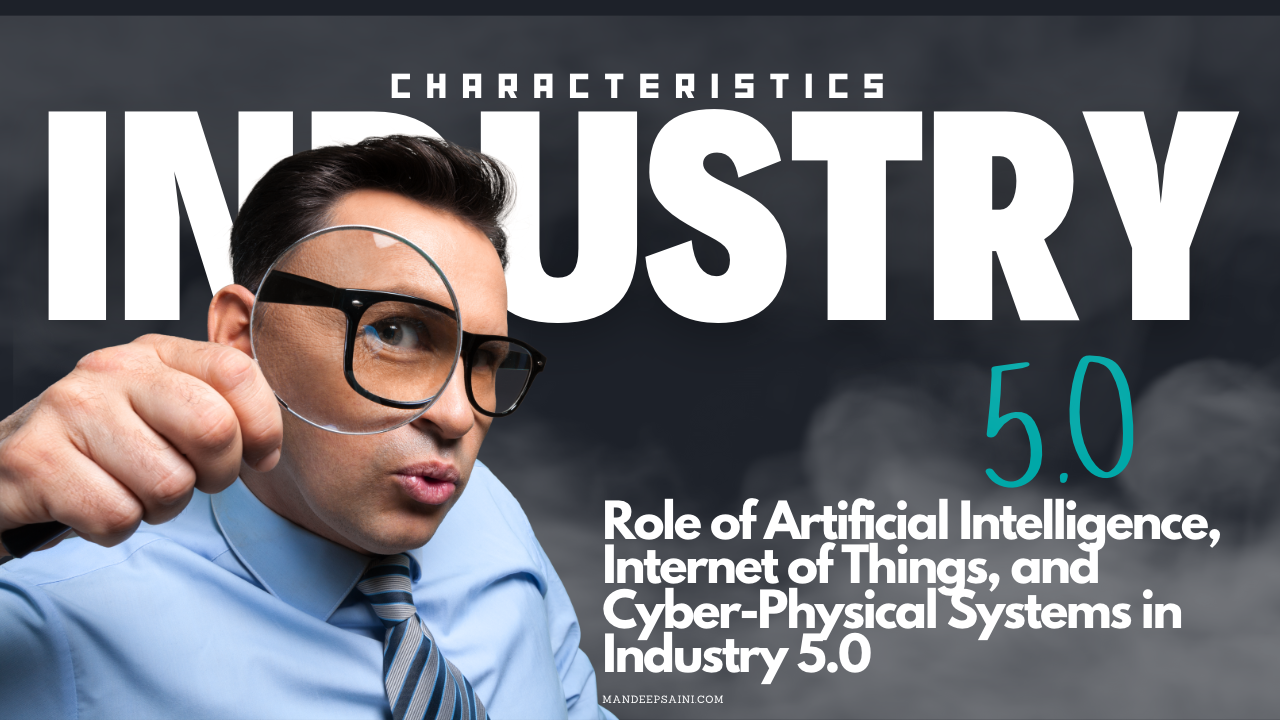Characteristics of Industry 5.0
Industry 5.0 is the latest version of the industrial revolution that is set to revolutionize the world of supply chains. It amalgamates several technologies such as robotics, artificial intelligence, the internet of things, and blockchain. Industry 5.0 is characterized by high automation and digitization intended to create a more resilient and sustainable supply chain.
Industry 5.0 is poised to revolutionize the world of supply chains by leveraging advanced technologies such as robotics, artificial intelligence, the internet of things, and blockchain.
One of the primary characteristics of Industry 5.0 is the use of advanced robotics and automation. The use of robots and automation systems in the manufacturing process aims to increase productivity and efficiency while reducing the need for human labor. Robots can perform repetitive and dangerous tasks that can be hazardous to humans, thereby improving the safety and well-being of workers.
Another characteristic of Industry 5.0 is using artificial intelligence (AI) and machine learning. These technologies enable machines to learn and adapt to changing situations, making them more intelligent and responsive. AI can analyze vast amounts of data and provide insights that can help organizations make informed decisions to improve the supply chain.
Industry 5.0 also relies heavily on the internet of things (IoT), which connects devices and machines, enabling them to communicate and share data in real-time. IoT devices can monitor and control various aspects of the supply chain, such as inventory levels, production processes, and transportation, thereby improving efficiency and reducing costs.
Blockchain technology is another critical component of Industry 5.0. It provides a secure and transparent way to store and share data across the supply chain. Blockchain can enhance supply chain transparency, traceability, and accountability, vital for sustainability and ethical practices.
In conclusion, Industry 5.0 is poised to revolutionize the world of supply chains by leveraging advanced technologies such as robotics, artificial intelligence, the internet of things, and blockchain. These technologies will enable organizations to create more resilient and sustainable supply chains by improving efficiency, reducing costs, enhancing transparency, and promoting ethical practices. As students and lecturers in higher education, it is essential to keep up with these latest developments to prepare for the future of the supply chain industry.
Role of Artificial Intelligence, Internet of Things, and Cyber-Physical Systems in Industry 5.0
Industry 5.0 is a new era of supply chain resilience and sustainability, which is characterized by the integration of cutting-edge technologies such as Artificial Intelligence (AI), Internet of Things (IoT), and Cyber-Physical Systems (CPS). These technologies are crucial in transforming how industries operate, making them more efficient, flexible, and sustainable.
Artificial Intelligence is the ability of machines to learn from data and make decisions based on that data. AI has the potential to revolutionize the supply chain industry by optimizing processes, reducing costs, and improving the accuracy of forecasting. AI-powered systems can analyze data from various sources, such as customer demand, inventory, and transportation, to make real-time decisions that optimize supply chain operations.
Internet of Things is the network of physical devices, such as sensors and actuators, that are connected to the internet and can exchange data with each other. IoT can potentially transform the supply chain industry by providing real-time visibility into the status of goods, equipment, and vehicles. This visibility can help companies optimize operations, reduce waste, and improve customer satisfaction. For example, IoT sensors can track the location and condition of goods in transit, ensuring they are delivered on time and in good condition.
Cyber-Physical Systems are systems integrated with physical processes and can interact with the physical world. CPS has the potential to revolutionize the supply chain industry by enabling the integration of digital and physical systems. This integration can help companies optimize operations, reduce waste, and improve customer satisfaction. For example, CPS can monitor the performance of machines and equipment, enabling predictive maintenance and reducing downtime.
Overall, the role of AI, IoT, and CPS in Industry 5.0 is to create a more efficient, flexible, and sustainable supply chain. These technologies enable companies to optimize their operations, reduce waste, and improve customer satisfaction, all while minimizing their environmental footprint. As students and educators, staying up-to-date on these emerging technologies and their potential applications in the supply chain industry is important. Doing so can help shape the future of supply chain resilience and sustainability.




